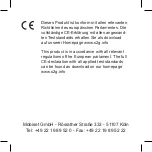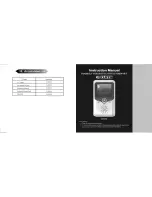
2240-00
4
60706-236
TESTING POLICY
Before any generator is shipped from the factory, it
is fully checked for performance. The generator is
loaded to its full capacity, and the voltage, current
and frequency are carefully checked.
Rated output of generator is based on engineering
tests of typical units, and is subject to, and limited
by, the temperature, altitude, fuel, and other condi-
tions specified by the manufacturer of the applicable
engines.
INTENDED USES
This engine generator set has been designed pri-
marily for portable heavy duty commercial use. Both
120 volt and 240 volt receptacles are provided in the
control panel to plug in your loads (lights, portable
tools, and small appliances). These units are dual
wound generators, therefore the 120 volt loads must
be equally split with 1/2 of the rated capacity avail-
able on each of the two 120 volt circuits.
This portable unit requires large quantities of fresh
air for cooling the engine and generator. For safety,
long life and adequate performance, these units
should never be run in small compartments without
positive fresh air flow.
RESTRICTED USES
DO NOT
remove from the cradle assembly. Re-
moval of the generator from the cradle assembly
may cause excessive vibration and damage to the
engine-generator set.
DO NOT
install and operate this generator in a small
compartment., i.e. generator compartments of ve-
hicles, motor homes or travel trailers. These com-
partments will not allow enough free flow of fresh
air to reach the engine generator set for cooling and
will cause the unit to overheat, damaging both the
engine and generator. Small compartments will also
develop hot spots where there is very little air flow
and may cause a fire.
PLEASE NOTE
There are 3rd party companies
making enclosures for generators that have been
properly engineered. The use of these 3rd party
enclosures is acceptable as long as they have been
certified and meet current code.
DO NOT
attempt to operate at 50 cycles. These
units are designed and governed to operate at 60
cycles only.
UNIT CAPABILITIES
GENERATOR CONNECTIONS
HPS12000HE: 120 volt and 240 volt receptacles
are provided for connection to various loads. The
diagram below represents this 10,800 watt (rated
output) generator. A & B represent the 120 volt out-
put legs of this generator. Up to 5400 watts at 120
volts (45 Amps) can be drawn from the receptacles
attached to either A or B output legs. This generator
is capable of producing 45 Amps of 240 volt current
at C. Check the appliance or tool nameplates for the
current and voltage to ensure compatibility. Re-
member that power taken from C reduces the power
available at equally both A and B and vice versa.
STARTING ELECTRIC MOTORS
Electric motors require much more current (amps) to
start than to run. Some motors, particularly low cost
split-phase motors, are very hard to start and require
5 to 7 times as much starting current as running cur-
rent. Capacitor motors are easier to start and usu-
ally require 2 to 4 times as much starting current as
running current. Repulsion Induction motors are the
easiest to start and require only 1 1/2 to 2 1/2 times
as much starting as running current.
Most fractional horsepower motors take about the
same amount of current to run whether they are
Repulsion Induction (RI), Capacitor (Cap), or Split-
Phase (SP) type.
If the electric motor is connected to a hard starting
load such as an air compressor, it will require more
starting current. If it is connected to a light load,
or no load such as a power saw, it will require less
starting current. The exact requirement will also
vary with the brand or design of the motor.





































